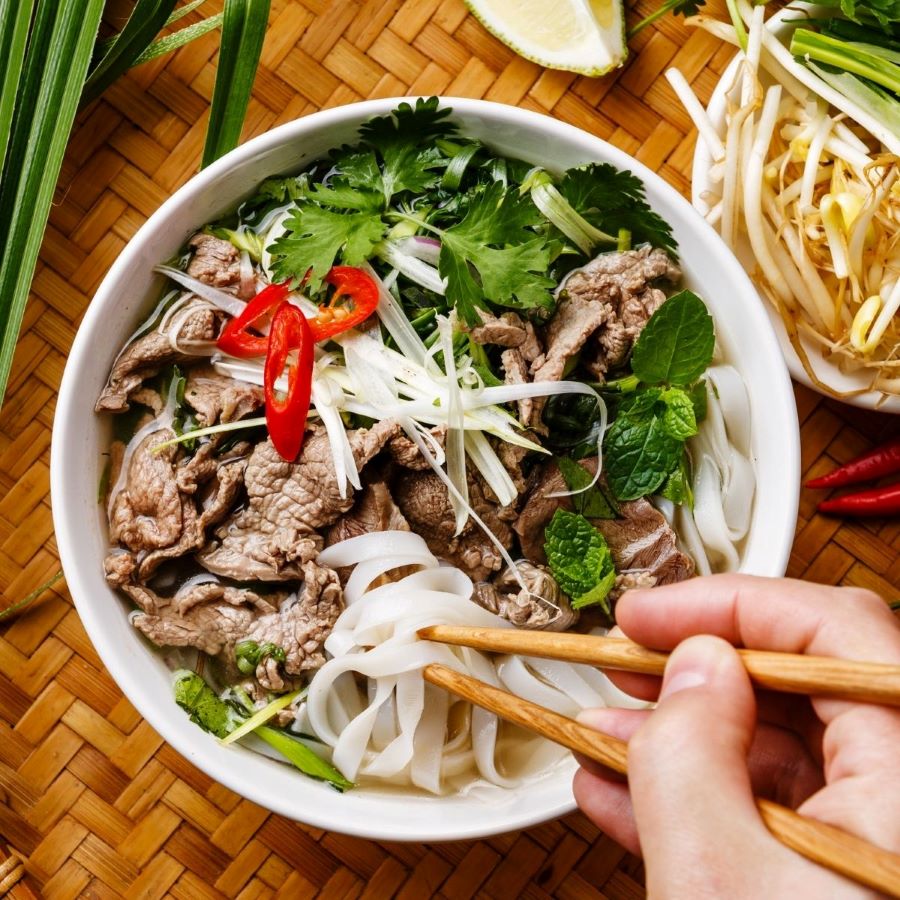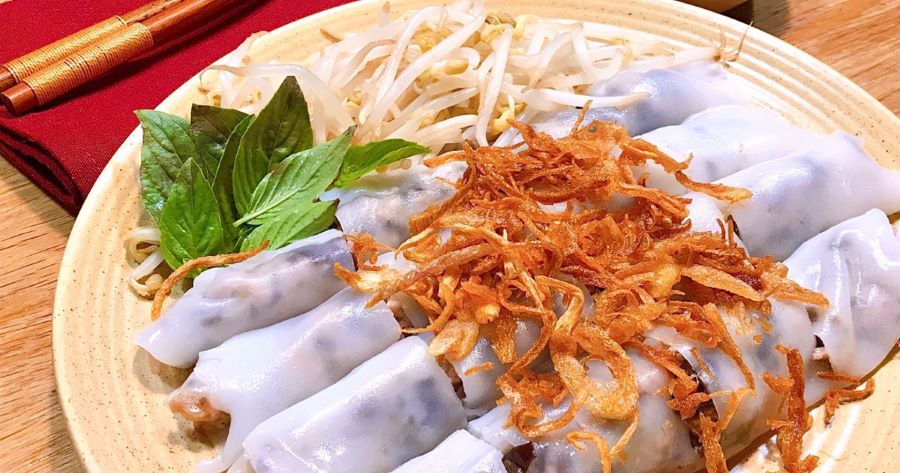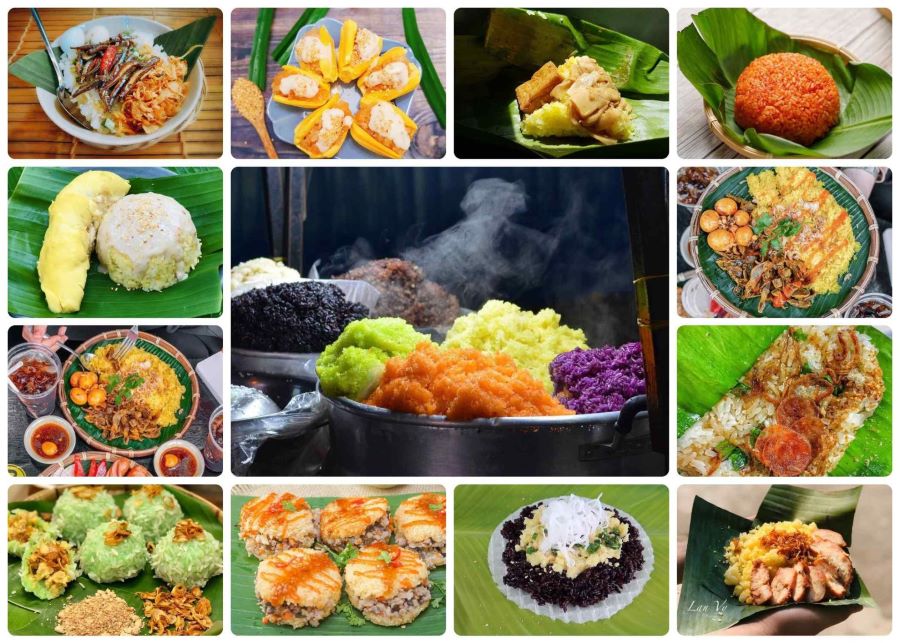Vietnamese Breakfast: What Do Locals Eat in the Morning?
Vietnamese breakfast is more than just a meal-it’s a cultural experience that sets the rhythm of daily life across the country. From the bustling streets of Hanoi to the quiet corners of the Mekong Delta, each region serves up its own flavors, stories, and rituals. This guide offers travelers a taste of how to eat like locals, soak in morning culture, and explore Vietnam one bowl at a time
Why Breakfast Matters in Vietnam
In Vietnam, daily life revolves around three main meals: breakfast, lunch and dinner – much like in many other cultures.
But here, meals are more than nourishment; they’re moments of family connection, tradition and community.
Breakfast, in particular, holds a special place in Vietnamese life.
While some grab a quick bite on the go, many families still begin the day together at home, enjoying a simple yet satisfying meal of rice, noodles or bread. It’s a warm and grounding start to the day.
As dawn breaks, the streets come alive – scooters hum, broth simmers and the aroma of fresh herbs fills the air. Locals gather on small stools at street stalls, savoring steaming bowls of pho, sticky rice or a crispy ‘banh mi’.
Whether it’s a bowl of leftover rice with egg or a quick noodle soup from a vendor, breakfast in Vietnam is hearty, social and steeped in tradition.
Unlike the light, sweet breakfasts typical in the West, mornings here begin with bold flavors and meaningful rituals.
For travelers, joining the early morning food scene isn’t just about eating well – it’s a window into Vietnamese culture, lived and shared one delicious bite at a time.
Northern Vietnam (Hanoi & Surroundings)
Pho (Vietnam’s iconic noodle soup)
It’s no secret that Vietnamese breakfast often begins with pho—the aromatic beef (or chicken) broth, flat rice noodles, lime, basil, and chilies. In Hanoi, pho shops open before dawn; locals consider it restorative (especially after a big night!). Moreover, pho vendors in Hanoi sometimes close before noon, signaling that breakfast moment when most locals get their morning bowl .
Pho Thin (13 Lo Duc, Hanoi City)
Price: 60,000 – 80,000 VND (about $3 – 3.50 USD) per bowl
Traveler review: One visitor praised:
“If you ever go to Hanoi old quarters try Pho Thin … it’s on our top 2 best Pho in Vietnam.
Locals and tourists alike love its unique stir-fried beef and fatty, onion-sprinkled broth.
Wake up to a Vietnamese breakfast of Pho, full of fresh flavors
Banh cuon (steamed rice rolls)
These delicate rolls are made from thin rice sheets wrapped around minced pork, mushrooms, and shallots. Steamed on the spot, they arrive with fried shallots, dipped in tangy fish sauce-a morning treat to watch and savor
Banh cuon Ba Trieu (101 Ba Trieu, Hai BaTrưng)
Price: ~30,000–50,000 VND (≈ $1.20–2.10 USD) per plate
Traveler review:
“Banh cuon Ba Trieu is cheaper than other restaurants in Hanoi… about 1–1.5 USD for a set full of Banh Cuon.

Banh Cuon offers a light, tasty start to a Vietnamese breakfast journey
Xoi (sticky rice)
Regionally varied, xoi might come topped with savory chicken, mung bean, shredded pork, or enjoyably sweet with coconut and peanuts. Both variants provide quick energy on the go
Xoi Yen (35 Nguyen Huu Huan, Hoan Kiem)
Price: Typically 50,000–60,000 VND per bowl (≈ $2.10–2.60 USD); a meal for two is about 100,000–110,000 VND (~$4.40–4.80 USD)
Traveler review:
“A meal for two typically costs between 100,000 to 110,000 VND or $5-6… dining here also let us get a glimpse of the local eating culture.”

Sticky rice brings texture and taste to every Vietnamese breakfast table daily
Banh gio, banh te (stuffed rice cakes)
Wrap your hands around one of these pyramid-shaped or cylindrical rice parcels filled with pork and mushrooms—they’re compact, warm, and widely sold from morning carts
Banh Gio Hong Anh (near Hom Market, Tran Xuan Soan corner)
Price: Around 20,000–25,000 VND each (≈ $0.85–1.10 USD)
Traveler insight:
“Madam Luy’s banh gio seems to be a favourite among Hanoians… texture of rice dough is soft and smooth like jelly and the gio cha served with the cake is also highlight of the treat.”
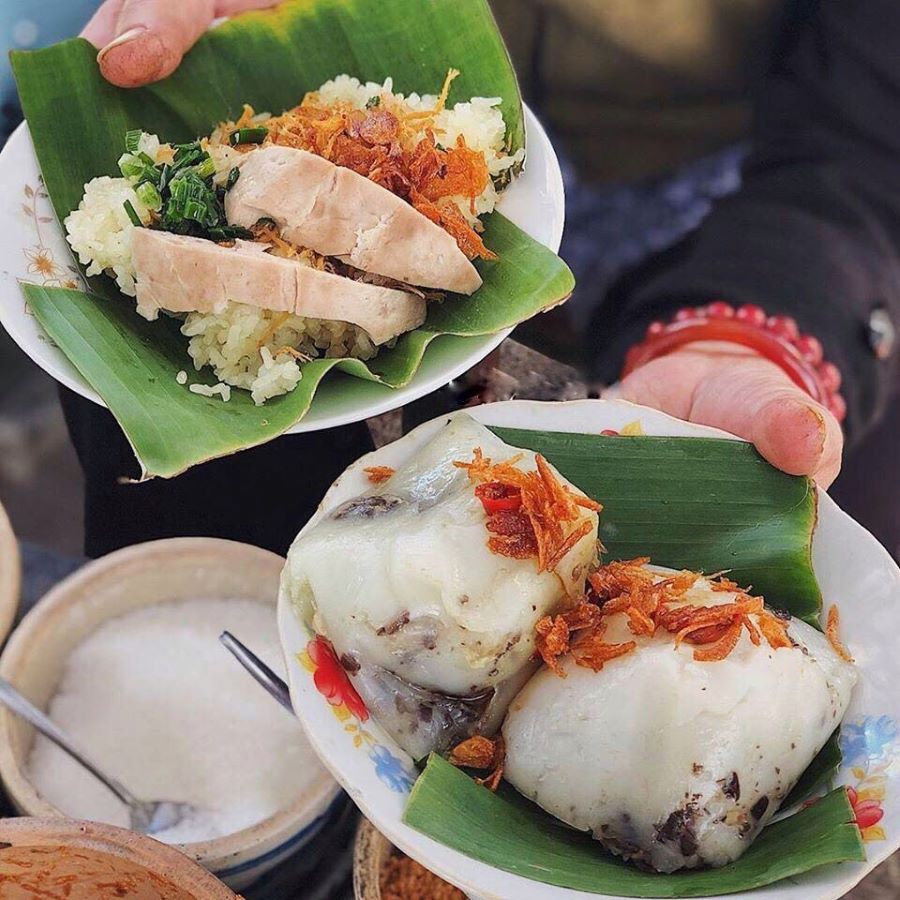
Banh Gio: soft rice dough and meat filling for Vietnamese breakfast lovers
Central Vietnam (Hue, Da Nang, Hoi An)
Bun Bo Hue (spicy beef noodle soup)
A signature of Hue, this red‑tinted broth packs spiced warmth and depth, served with beef shanks, pork, herbs, and rice vermicelli. It’s bold and perfect for cooler central highlands mornings
Bun Bo Me Keo (20 Bach Dang, Phu Cat, Hue)
Price: 25,000–35,000 VND (≈ $1.10–1.50 USD)
Traveler review:
“This place opens early and it’s packed with locals—which is always a good sign. The broth was super rich and aromatic with lemongrass and chili, and the meats were tender. Easily one of the best bowls we had in Vietnam.”
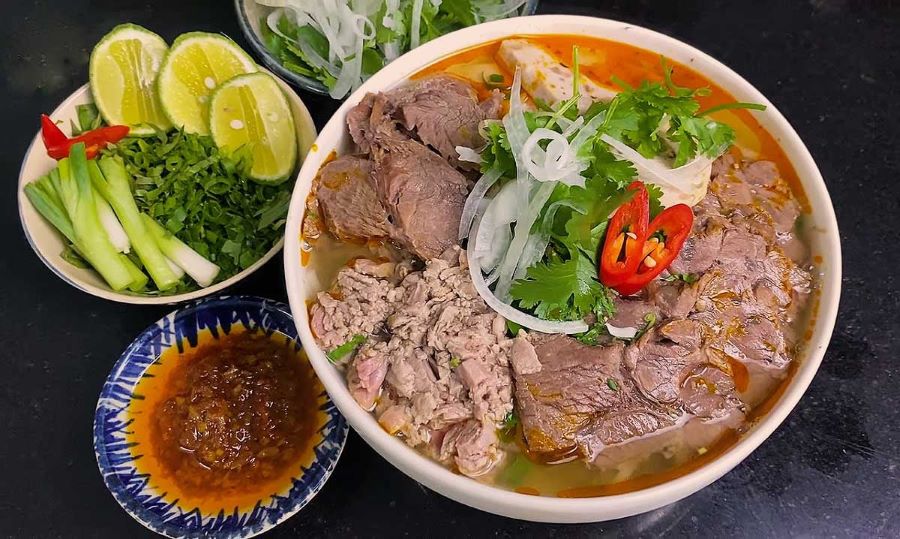
Bun Bo Hue delivers rich taste to your Vietnamese breakfast table daily
Banh beo (steamed rice cakes)
These petite discs of steamed rice cake, each topped with shrimp, mung bean, scallion oil, and crispy pork fat, reflect Imperial-era elegance—tiny, savory bites that offer pure comfort in every spoonful.
Banh Beo Ba Do (near College of Arts, Hue)
Price: ~15,000–20,000 VND (≈ $0.65–0.85 USD) for a tray of 12–15 cakes
Traveler review:
“This was probably the best banh beo I had in all of Hue—each cake was so delicate, topped with perfect shrimp and scallions. The tray disappeared in minutes!”
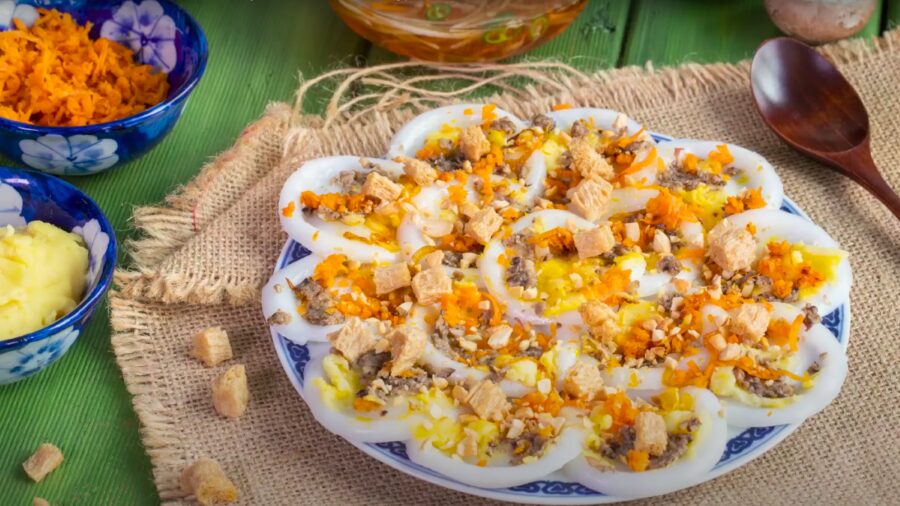
Start your Vietnamese breakfast with Banh Beo, small bites of joy
Mi Quang (turmeric rice noodles)
Though often eaten later, the local breakfast markets may serve it early: flat yellow‑tinted noodles served dry, with broth on the side, topped with meat, peanuts, herbs-a deliciously textured start to the day.
Mi Quang Ong Hai (6A Truong Minh Luong, Cam Chau, Hoi An)
Price: ~40,000 VND per bowl (≈ $1.70 USD)
Traveler review:
“Had the shrimp mi quang and the pork mi quang and it was fabulous. The noodles themselves were fantastic but the bowl as a whole was worth way more than what they charge… It’s packed so we had to wait.

Central Vietnam cuisine: Mi Quang, a taste of home
Southern Vietnam (Ho Chi Minh City & Mekong Delta)
Com tam (broken rice)
Originally a farmers’ staple turned Saigon specialty, it features broken rice with grilled pork chops or ribs, shredded pork, steamed egg, scallion oil, fish sauce, pickles-a full plate popular any time of day
Com Tam Ba Ghien (84 Dang Van Ngu, Phu Nhuan, HCMC)
Price: 60,000–90,000 VND per plate (≈ $2.60–3.90 USD)
Traveler review:
“Ba Ghien lived up to the hype—massive, smoky grilled pork chop, perfectly chewy rice, and that runny egg. It’s an iconic Saigon dish done right.”
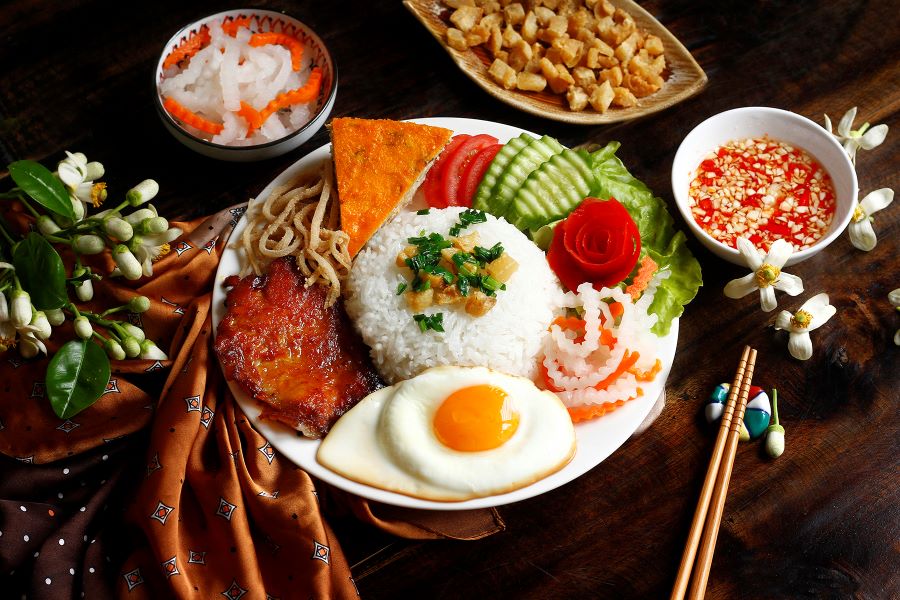
Grilled pork on broken rice-Cơm Tấm defines Vietnamese rice dishes beautifully
Hu tieu (southern noodle soup).
Teochew-influenced clear soups may include pork, seafood, quail eggs, and chewy rice noodle-lighter than pho, sweeter, and deeply satisfying.
Hu Tieu Nam Vang Nhan Quan (122D Cach Mang Thang 8, Dist 3, HCMC)
Price: 50,000–75,000 VND per bowl (≈ $2.10–3.20 USD)
Traveler review:
“This hu tieu nam vang was fresh and delicious – large, firm, moist shrimp, flavorful pork liver, tender ground pork… I prefer it ‘dry,’ with the broth on the side. Simply an excellent meal

A flavorful Vietnamese breakfast begins with a steaming bowl of Hu Tieu
More Hidden Gems & Local Favorites
FAQs
Start planning your tailor-made Vietnam tour by contacting one of our specialists…


